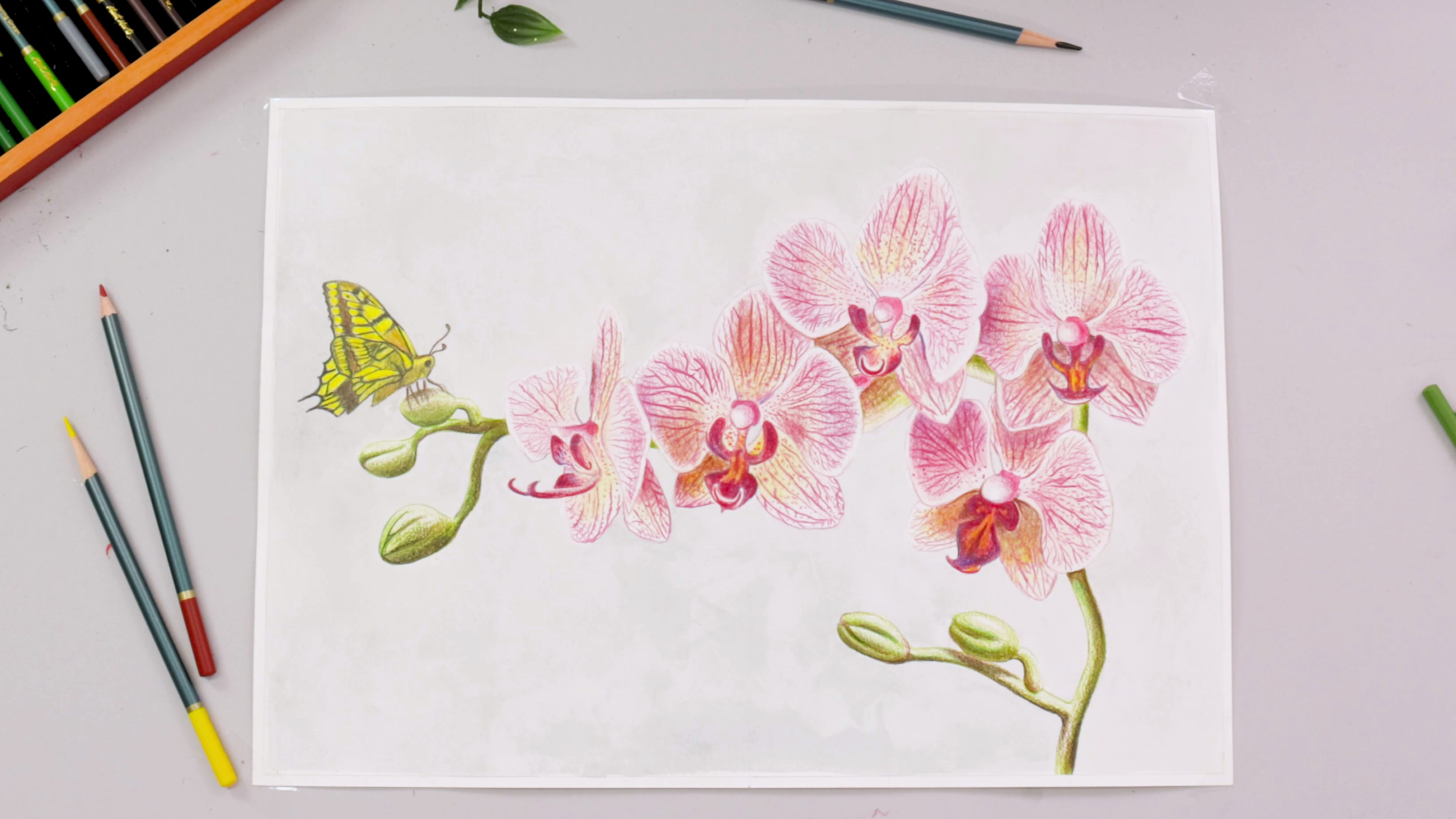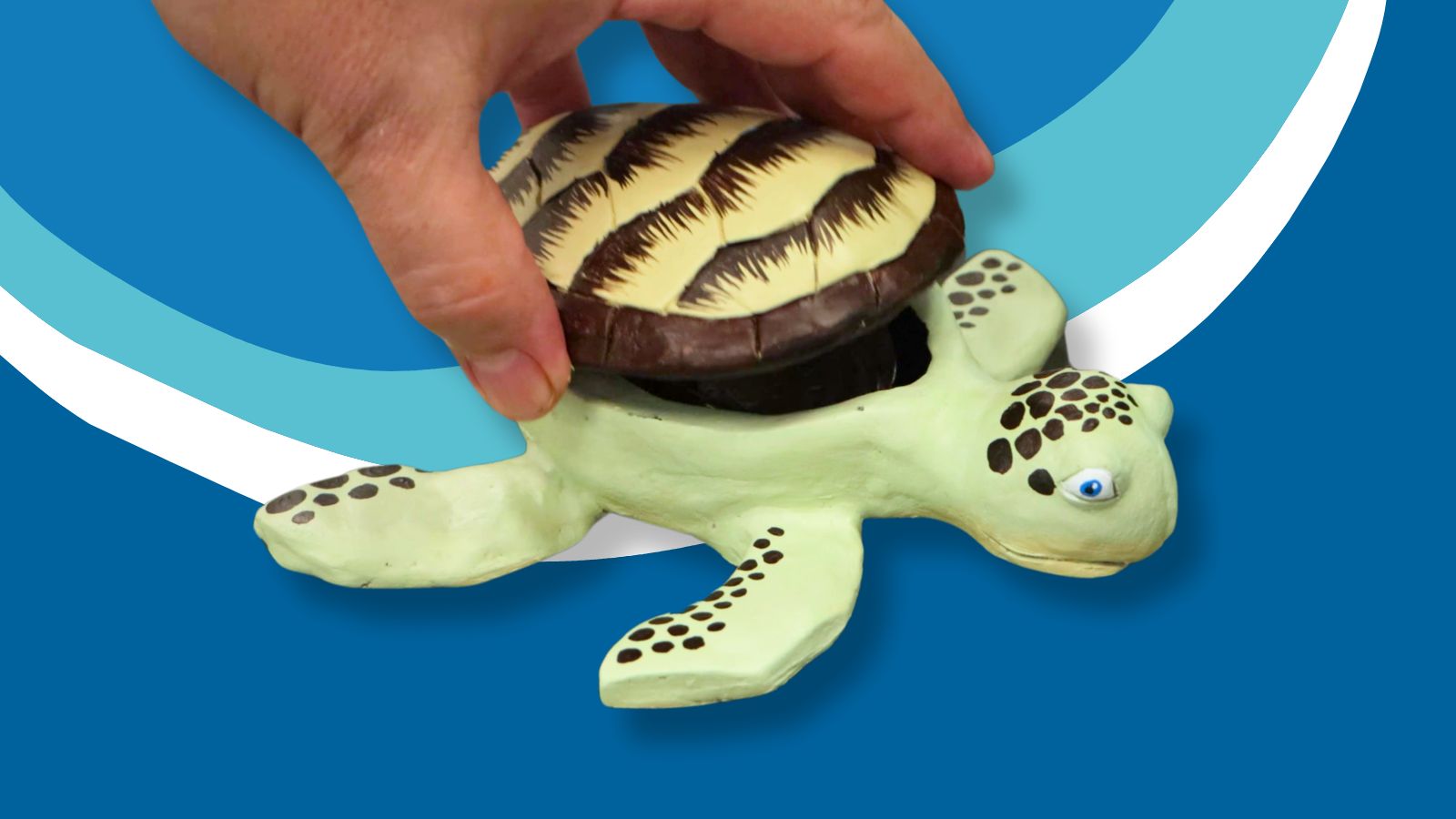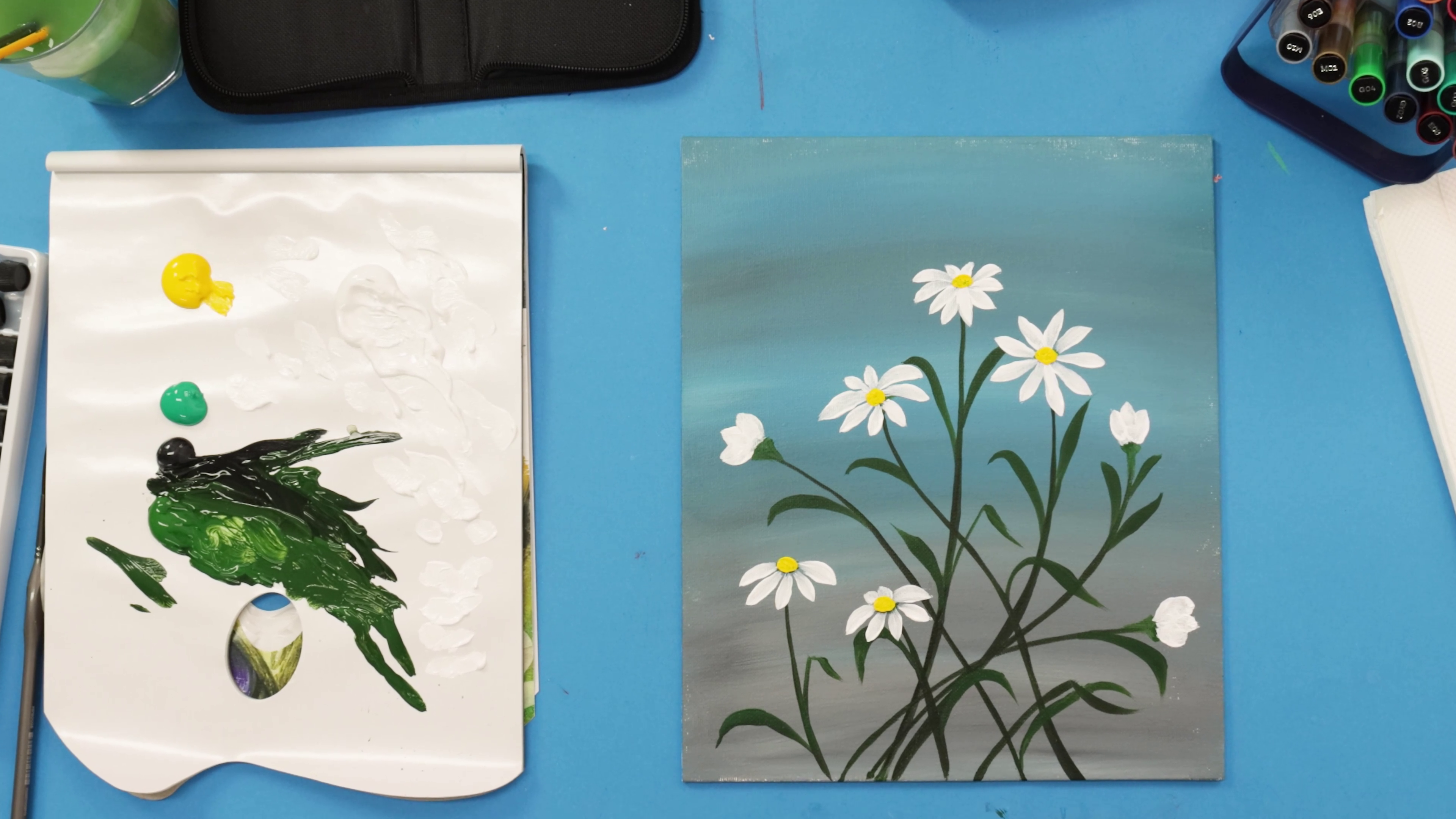How to paint a dinosaur
Step 1: Using Modelling Paste
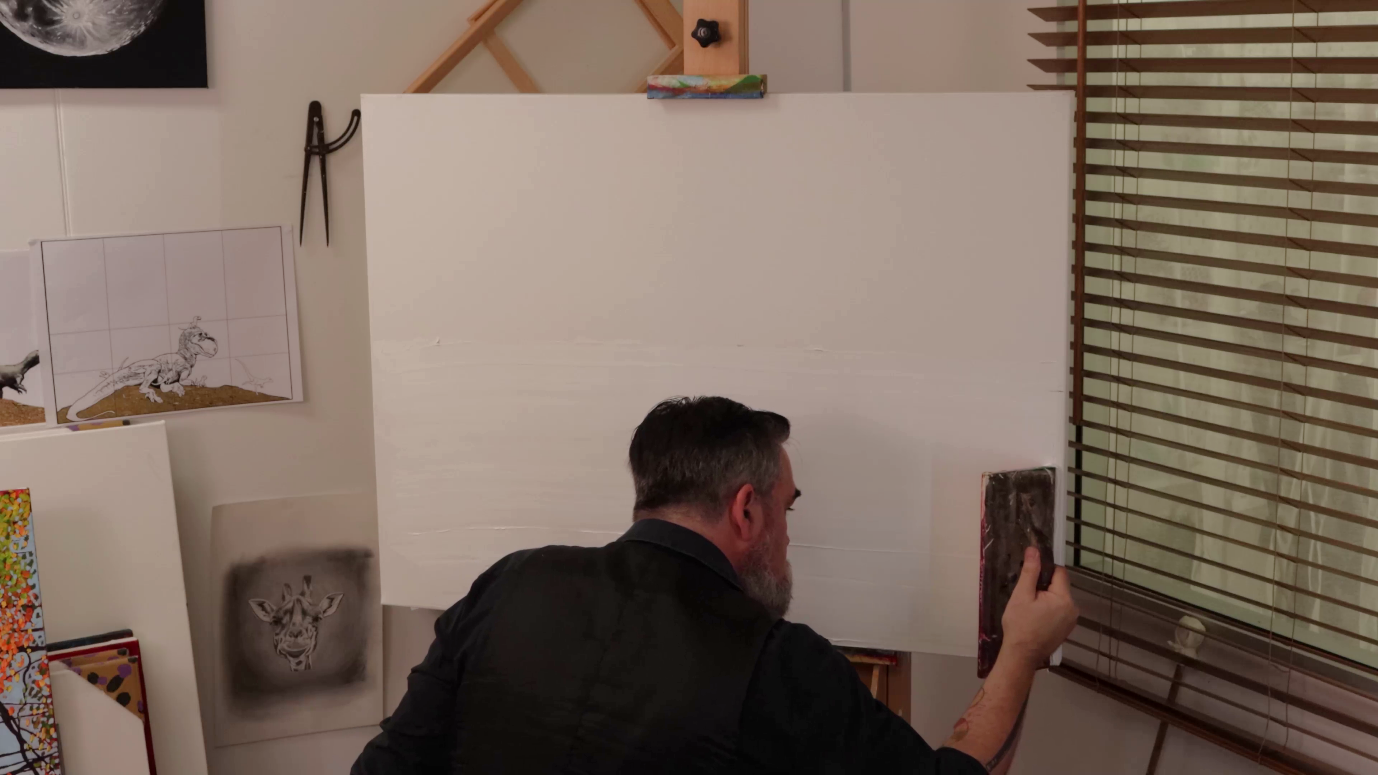
- Apply modelling paste over the canvas using a concrete float or large palette knife
- Use a large offset palette knife to smooth the paste out
- Allow the surface to dry before moving to the next step
Step 2: Canvas tint
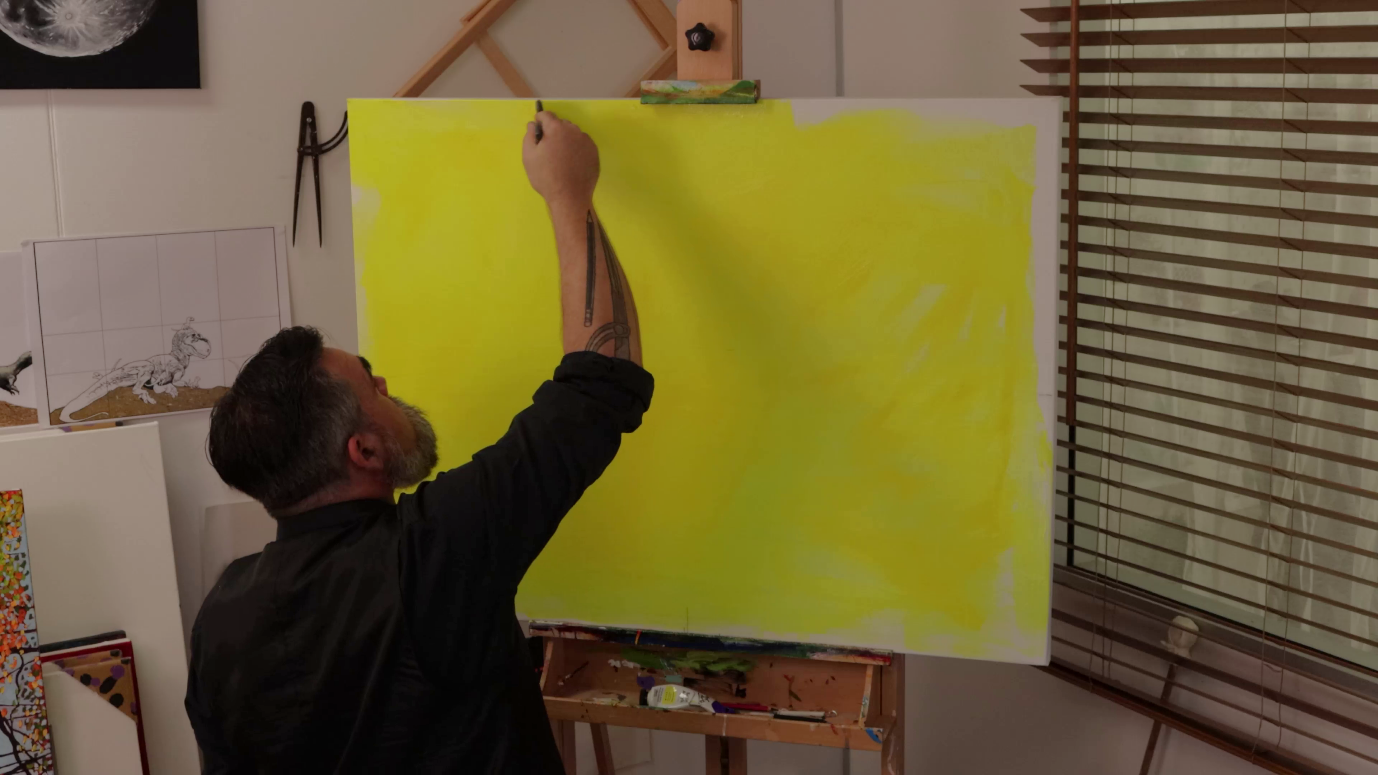
- Tint the canvas with a base coat of Lemon Yellow acrylic paint
- Acrylic paint provides a stable base for oil paints
- Plus, the yellow will enhance the depth of the colours you paint over it
Step 3: Dinosaur outline drawing
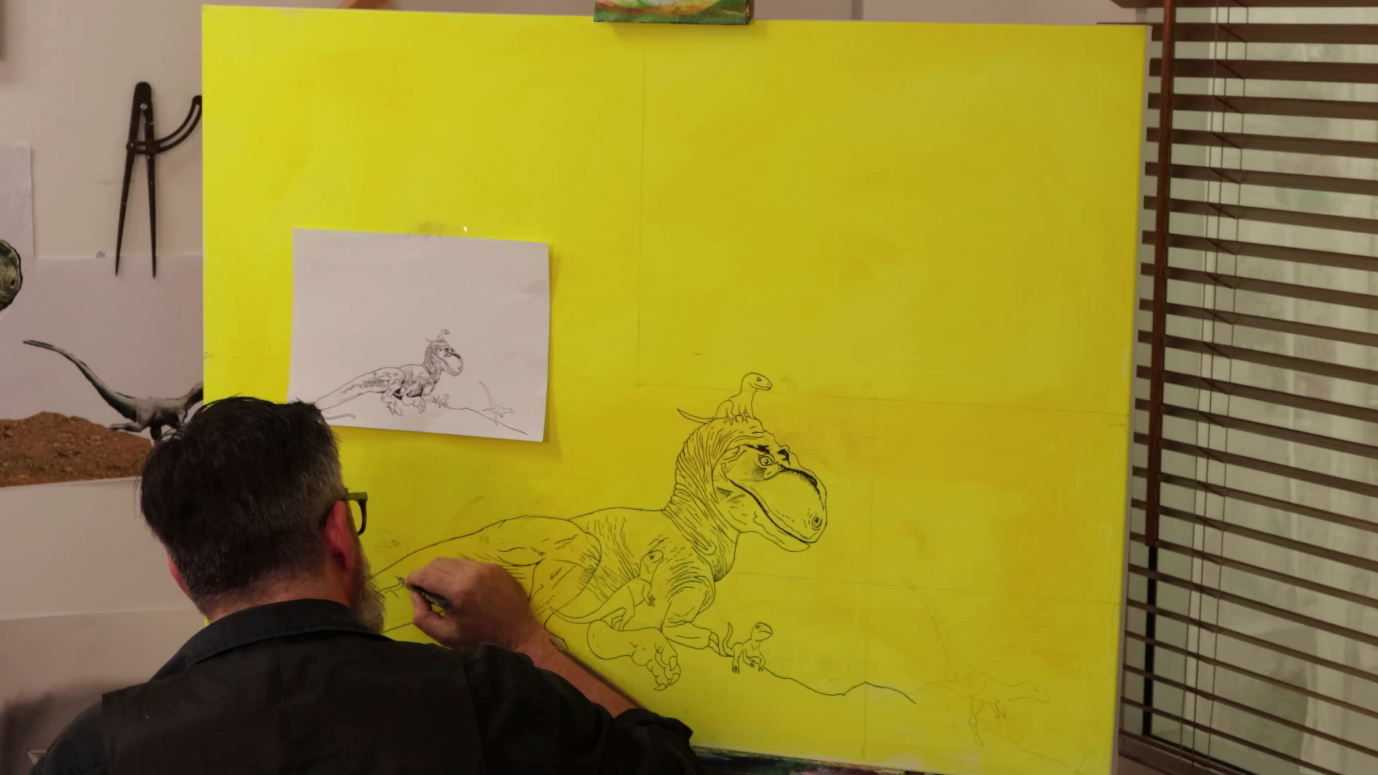
- Print the outline on our website and draw a grid over it for accurate dimensions
- Use charcoal to draw a faint grid with upscaled dimensions on the canvas
- Sketch the dinosaur using graphite over the grid
- Redraw the outlines with a black acrylic paint pen for clearer lines
Step 4: Background painting
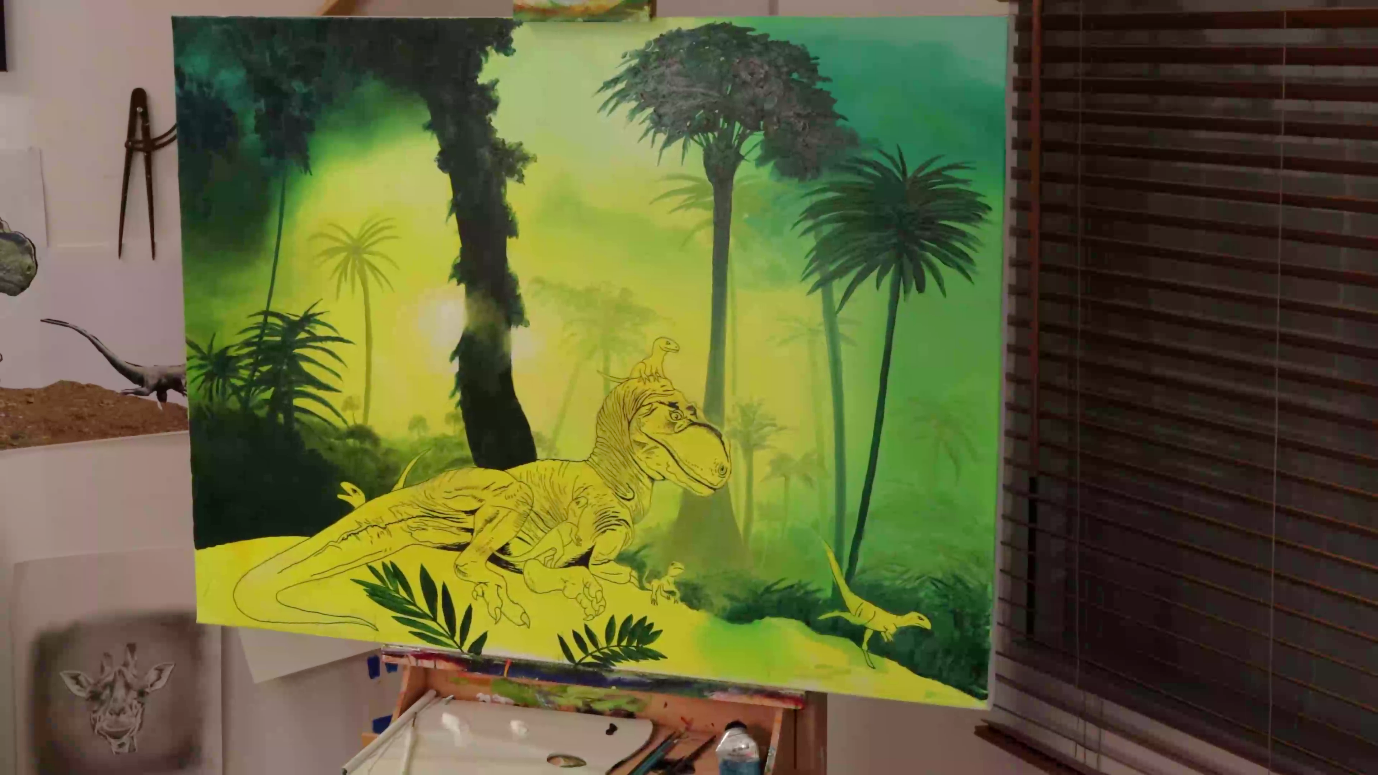
- Print out the colour guide for reference
- Lay in Hooker’s Green acrylic paint for the large tree and the cycads
- Squeeze out Olive Green, Permanent Green, Sap Green, Lemon Yellow, Phthalo Blue, Light Green, Titanium White, and Brilliant Red
- Lay in the yellow to green mid-area of the canvas with thin, blended layers
- Apply Sap Green and Permanent Green for the foliage near the bottom of the canvas
- Blend them gently with yellow for a blue-green tone
- Add Phthalo Blue and white for the sky in the top right corner, blending it with yellow and white as you move downwards
- Paint the trees and foliage in varying tones, adding darker tones for trees in the background and lighter washes for distance effects
- Use white in the centre of the canvas to suggest sunlight peeking through
- Finish by dry brushing orange in areas where the light hits the tree
Step 5: Grisaille painting technique
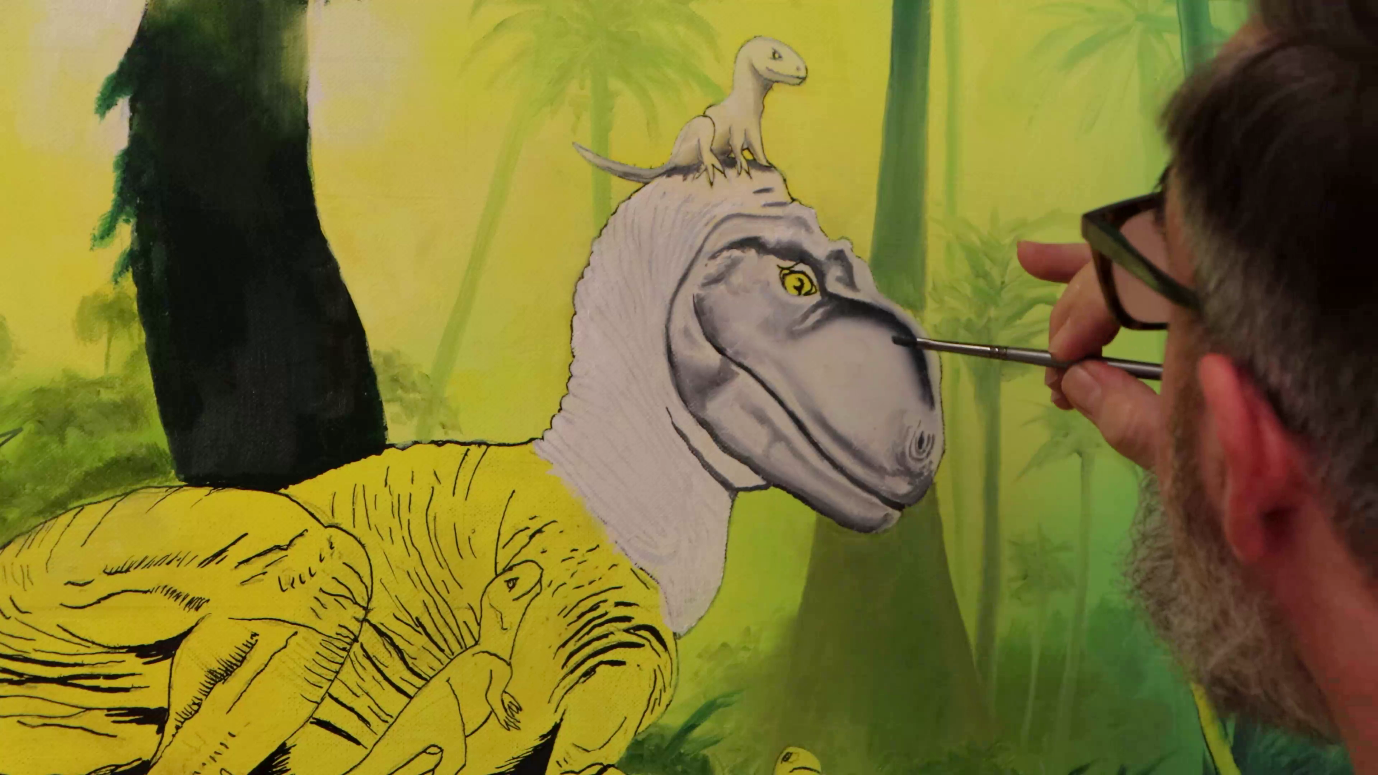
- Paint the dinosaurs in a monochromatic tone using Titanium White and Ivory Black (this is called a grisaille!)
- Start by applying a thin coat of Titanium White over the dinosaur
- Then use a dry brush charged with black for shadows
- Gradually build up the tones and blend the ultra-dark areas into the greys for smooth transitions
- Allow the grisaille layer to dry (it should take 3-5 days to be touch-dry)
Step 6: Oil glazing technique
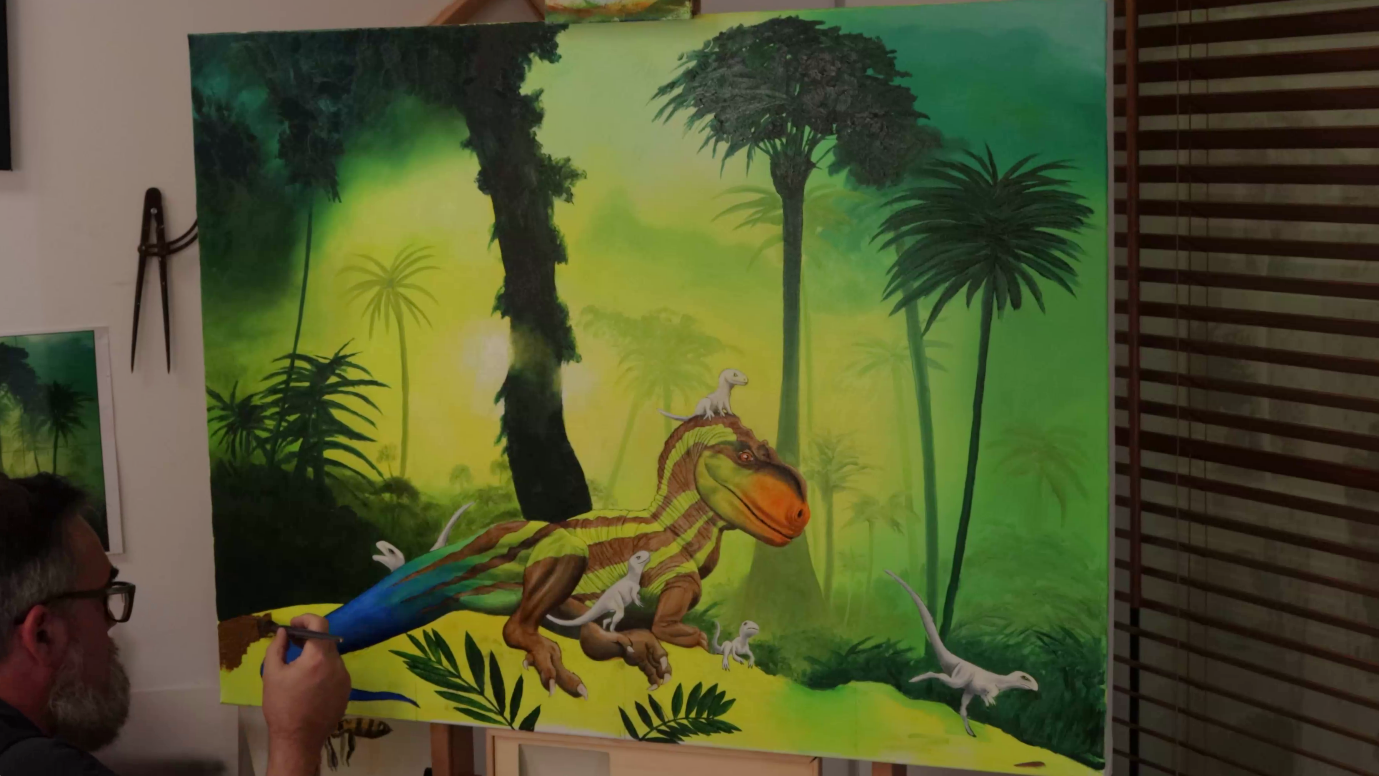
- Once the grisaille is dry, use a water-based felt tip pen to mark where the dinosaur’s stripes and spots will go
- Squeeze out Orange, Yellow Deep, Lemon Yellow, Burnt Umber, and Phthalo Blue onto your palette
- Mix each oil paint colour with linseed oil for glazing
- Start at the snout with Orange and blend into Yellow Deep, then Lemon Yellow as you move down the body, ensuring smooth transitions
- Follow the same glazing technique for the hatchlings, but instead of stripes, create a series of spots with the same colours
Step 7: Mont Marte Sand Texture Medium
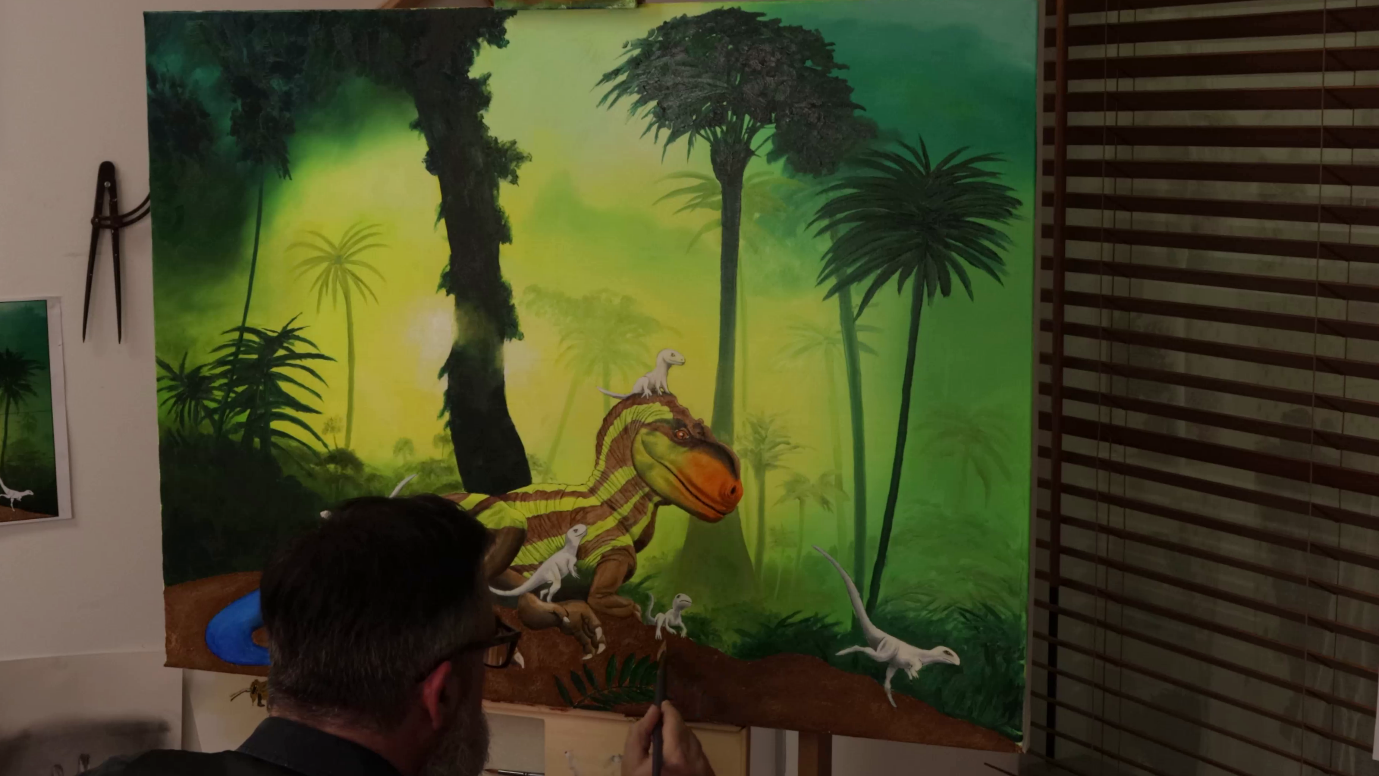
- While the glazing dries, mix sand texture medium into Acrylic Titanium White paint, tinted with Yellow Ochre and Burnt Umber
- Apply this mix with a taklon brush to the dirt mound for added texture
Step 9: Final touches
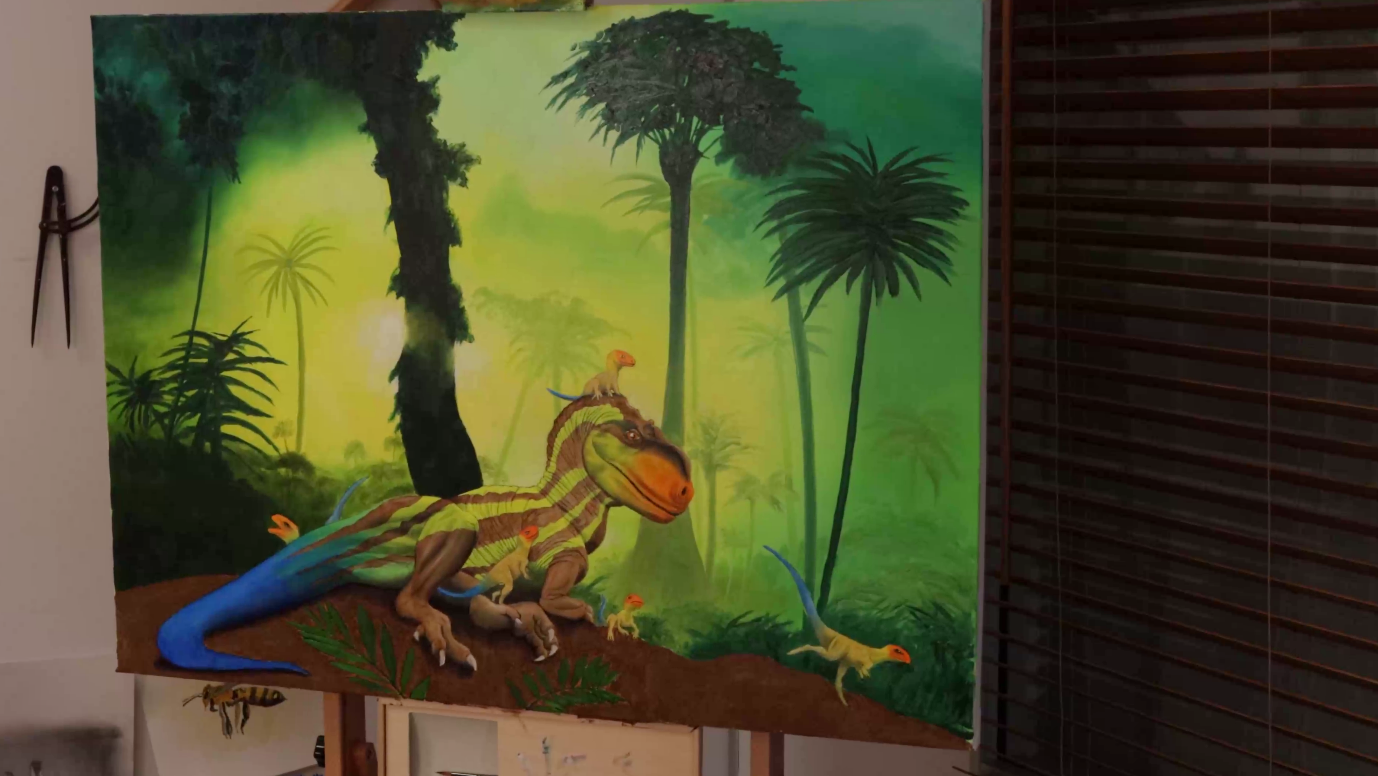
- Add any finishing touches and refine areas as needed
- Add shadows under the dinosaur to incorporate her into the scene naturally
- Paint the cycad leaves with green tones for a lush, finished look
If you completed those steps, you’ve not got a high-quality, dynamic dinosaur painting on your hands! We hope you had as much fun creating this piece as we did. Stay creative and get ready for more exciting projects coming soon.
- CMMD7510 Double Thick Canvas Premium 76.2 x 101.6cm (30 x 40in)
- Modelling Paste Premium
- Acrylic paints: Lemon Yellow, Hooker's Green
- Oil paints: Olive Green, Permanent Green, Sap Green, Lemon Yellow, Phthalo Blue, Light Green, Titanium White, Brilliant Red, Burnt Umber, Burnt Sienna, Ivory Black, Yellow Deep, Orange
- Dual Tip Acrylic Paint Pens Signature Black 2pc
- Sand Texture Medium Premium
- Refined Linseed Oil Medium
- Abstract Expression Brush Premium 25mm
- Artist Acrylic Brush Premium Taklon Flat Wide 75mm
- Artist Brush Premium Taklon Filbert 24
- Liner, round, flat, and mop brushes
- Palette knife
- Water-based felt tip pen for drawing markings – we used Dual Tip Markers Brush/Bullet Premium 12pc
- Charcoal for gridding




























